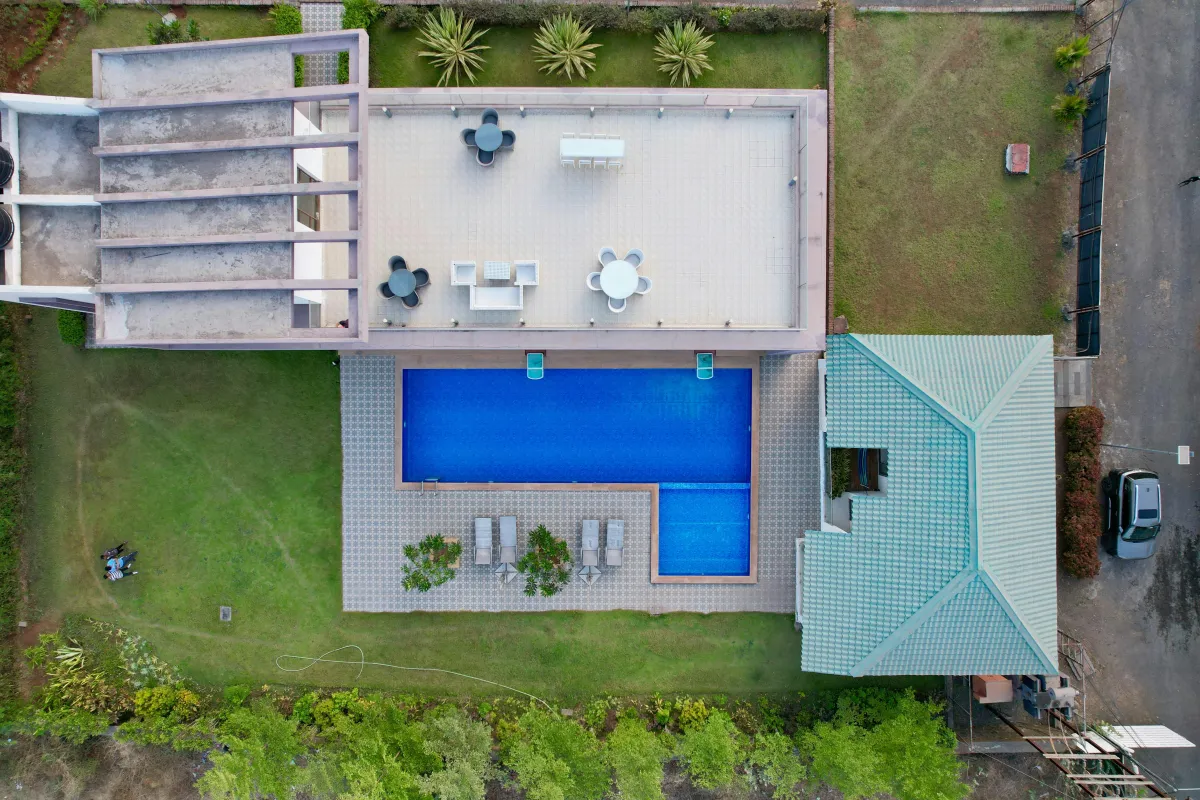
Custom Home Layouts: Find the Perfect Fit for Your Lifestyle
Choosing the right house layout is one of the most important steps in building a custom home. From open-concept living to compact floor plans, each design impacts how you live, work, and connect at home. The layout you choose shapes comfort, privacy, traffic flow, and long-term value. This blog explores the most popular layout styles and how to align them with your lifestyle and household size. It also highlights the rooms that matter most and how design trends are evolving. With Custom Builder Connection, you can navigate this process confidently by partnering with experts who match your vision.
Key Takeaways:
Open concept, ranch-style, and two-story homes remain the most in-demand layouts for custom builds.
Your family size, daily routines, and long-term goals should guide your layout choice.
Key spaces like kitchens, master suites, and flex rooms shape functionality and comfort.
Trends like energy efficiency and smart tech integration are reshaping house layout designs.
Custom Builder Connection streamlines the journey by connecting you with trusted professionals.
What Are the Most Popular House Layout Designs for Custom Homes?

Homeowners look for layouts that blend seamless flow, aesthetic appeal, and practical adaptability. The most in-demand plans optimize daily routines, support entertaining, and enhance resale value. From airy, wall-free living areas to single-floor ease or stacked levels, each layout offers distinct advantages. Understanding how space is allocated helps families choose plans that suit their lifestyle and budget. Below, three top layouts are explored for their key benefits and design features.
Open Concept Floor Plans
Open concept custom floor plans remove barriers between the kitchen, dining, and living areas to create a unified, light-filled space. This layout enhances social interaction and allows natural lighting to permeate deeper into the home. Without walls, furniture can be reconfigured easily for gatherings or everyday use. Large islands or peninsula counters often anchor the kitchen zone while maintaining visual cohesion. Seamless flooring and consistent finishes reinforce the unified feel. Open custom home layouts work especially well for families who prioritize connectivity and entertaining. They also make smaller footprints feel more expansive, aligning with small house layout ideas that emphasize space efficiency.
Ranch-Style Single-Story Layouts
Ranch layouts feature a single level with all main living spaces on one floor, offering effortless accessibility and flow. Low-pitched roofs and wide facades emphasize horizontal lines and indoor-outdoor connections. Sliding doors or French doors open to patios, extending living areas outside. The absence of stairs benefits aging-in-place or mobility-limited households. Centralized living, dining, and kitchen zones keep daily routines simple and efficient. HVAC and maintenance needs are often lower in single-story homes. Ranch plans suit buyers seeking convenience and seamless indoor-outdoor living.
Two-Story Plans for Space Optimization
Two-story home layouts stack living and sleeping areas to maximize buildable square footage on smaller lots. Public zones, like kitchens and family rooms, occupy the ground floor, while bedrooms and private retreats are upstairs. This separation enhances privacy and noise control. Bonus rooms or lofts on the upper level offer flexible options for a home office or play area. Overhangs and balconies can add outdoor access without expanding the footprint. By building vertically, families gain extra interiors and distinct zones without sacrificing yard area. Two-story plans balance efficiency, privacy, and functionality, making them a practical floorplan choice during custom home construction in Houston.
How Do You Choose the Right House Layout Based on Your Lifestyle?

Choosing a custom house layout depends on how your family lives day to day. From how often you entertain to future accessibility needs, your routines should shape the flow and size of each space. The right layout supports comfort, minimizes wasted space, and adapts over time. Whether you work from home or plan for multi-generational living, aligning design with lifestyle helps ensure the home works for your present and future needs. Below are three key considerations that guide layout decisions.
Matching Layouts to Daily Routines
Every household has unique patterns, some center around hosting large groups, others value quiet and privacy. If you spend most of your time in the kitchen or prefer casual meals, open layouts with integrated dining may suit you best. Families with young children might prioritize visibility between rooms, while those with older members may focus on noise separation and accessible features. The layout should reflect how spaces are used hour by hour. Mapping your current routine helps identify what features should be central in your floor plan.
Adapting Layouts to Household Size
The number of people in your household greatly impacts room count and square footage needs. A couple might need one bedroom and a flex office, while a larger family could require separate zones for kids, guests, and shared activities. Bathrooms, closets, and living areas must scale with household size to avoid overcrowding. Open plans may work better for smaller homes, while large families might need clearly divided zones. Knowing how many people the home will serve—now and in the future—ensures the layout remains functional long-term.
Prioritizing Flexibility for Changing Needs
Over time, how you use your home is likely to change. A layout with flex spaces—like a loft that becomes a nursery or a den that converts to a home office—offers adaptability without requiring major renovations. Features like wider doorways, ground-floor suites, and bonus rooms support evolving household needs. Choosing a layout that’s flexible lets your home grow with you, whether that means accommodating remote work, aging parents, or lifestyle shifts. Prioritizing versatile space is key for long-term comfort and value.
What Are the Essential Rooms and Spaces in Popular House Layouts?

Popular house layouts share foundational spaces that support functionality, comfort, and flow. Beyond bedrooms and bathrooms, core areas like kitchens, mudrooms, laundry rooms, and master suites significantly impact daily routines. Thoughtful placement and design of these rooms help streamline movement, enhance privacy, and improve long-term livability. Below are key spaces that elevate popular floor plans and how they contribute to a more seamless living experience.
How Does Kitchen Layout Impact the Overall Floor Plan?
The kitchen is often the center of activity, and its design influences how the rest of the home functions. A well-placed kitchen improves traffic flow and links easily to dining, living, and outdoor spaces. Open kitchens support entertaining and family interaction, while galley or L-shaped kitchens suit more compact footprints. Key considerations include appliance placement, counter space, and integration with adjacent areas. A smart kitchen layout not only enhances usability but also sets the tone for the home's overall aesthetic and functionality.
What Are the Benefits of Including a Mudroom and Laundry Room Combo?
Combining the mudroom and laundry room increases efficiency and organization by merging two high-use areas. This shared space keeps dirt and clutter from entering the main living areas while also supporting daily chores. With features like benches, hooks, utility sinks, and folding counters, the combo room becomes a functional hub. Placing it near the garage or back entry creates a natural transition point for dropping bags, coats, and shoes. It simplifies routines while maximizing space in high-traffic areas of the home.
How Do Master Bedroom and Bathroom Designs Vary Across Layouts?
Master suites can range from modest, functional setups to private retreats with deluxe features. Placement on the first floor offers convenience and accessibility, while upstairs positioning adds separation and quiet. The bathroom layout—such as dual vanities, separate tubs and showers, and water closets—impacts comfort and usability. Walk-in closets, private hallways, and optional outdoor access enhance the suite’s appeal. Tailoring the master area to fit household needs ensures privacy, storage, and relaxation without sacrificing flow in the rest of the layout.
How Can Custom Builder Connection Help You Find the Best Layout and Builder?

Custom Builder Connection simplifies the custom home journey by connecting homeowners with vetted builders, designers, and architects based on their needs and preferences. Their network specializes in popular home layouts and offers guidance from planning to execution. Instead of navigating design and builder selection alone, homeowners benefit from CBC’s tailored matchmaking approach. This ensures access to trusted professionals, relevant layout experience, and a smooth planning process—all under one coordinated service.
How Does Connecting with Vetted Builders Simplify the Custom Home Journey?
Custom Builder Connection pre-screens professionals for quality, experience, and style alignment. Their process connects homeowners with builders who are familiar with layout styles like open-concept, ranch, or two-story homes. This reduces trial-and-error, shortens timelines, and improves communication throughout the project. CBC’s role ensures homeowners aren’t starting from scratch but working with proven experts who match the vision and scope of the custom home.
What Expertise Do Architects and Designers Bring to Popular House Layouts?
Architects and designers offer strategic layout development, ensuring floor plans reflect both lifestyle needs and structural efficiency. Their insights include optimizing traffic flow, enhancing natural light, and adjusting spatial relationships. With Custom Builder Connection facilitating introductions to design experts, homeowners gain early access to tailored guidance. These professionals help create layouts that are practical, code-compliant, and visually cohesive—critical for building a custom home that functions beautifully day to day.
How Can You Start the Custom Home Design Process with Expert Guidance?
Homeowners can begin by submitting a short consultation request through Custom Builder Connection’s website. Based on the preferred home style, budget, and priorities, CBC matches clients with good local professionals. From there, the process includes meetings, plan reviews, cost breakdowns, and contract finalization. Custom Builder Connection’s structure ensures a streamlined path from idea to execution, giving homeowners clarity, control, and confidence at every step.
Frequently Asked Questions
What house layout is most popular with modern homeowners?
Open concept layouts are among the most popular, offering a seamless flow between the kitchen, dining, and living areas. They enhance natural light, make smaller spaces feel larger, and encourage social interaction, making them a top choice for both entertaining and everyday living.
How do I know which layout fits my family’s lifestyle best?
Start by evaluating your household’s routines and needs. Consider factors like privacy, entertaining, remote work, and accessibility. Families with young children may prefer open sightlines, while those seeking quiet may prioritize zoning between private and shared spaces.
What rooms are essential in a functional custom home layout?
Kitchens, master suites, laundry rooms, mudrooms, and flexible living zones are foundational. Their placement directly affects comfort, traffic flow, and day-to-day convenience. Thoughtful design of these rooms helps maximize livability across all layout types.
How can I get matched with a builder who understands my layout goals?
Custom Builder Connection(CBC) matches homeowners with vetted builders who specialize in the layouts they’re most interested in, whether that’s open concept, ranch-style, or multi-level homes. This ensures the builder is aligned with both the design and the execution needs.
What is the first step in designing a custom home with expert help?
The first step is submitting a consultation request to Custom Builder Connection. From there, they connect you with professionals suited to your budget and layout preferences, guiding you through planning, design reviews, and builder selection with a streamlined process.
Conclusion
The layout you choose isn’t just about looks—it’s about how your home will support your life every day. From maximizing space to planning for future needs, a well-chosen design leads to lasting comfort and value. Understanding layout types and lifestyle fit is key to making the right decision. With support from Custom Builder Connection, you gain access to local pros who simplify the process. Whether you’re dreaming of open space or cozy nooks, expert guidance brings that vision to life. Ready to start building smarter? Let CBC help you take the first step!


